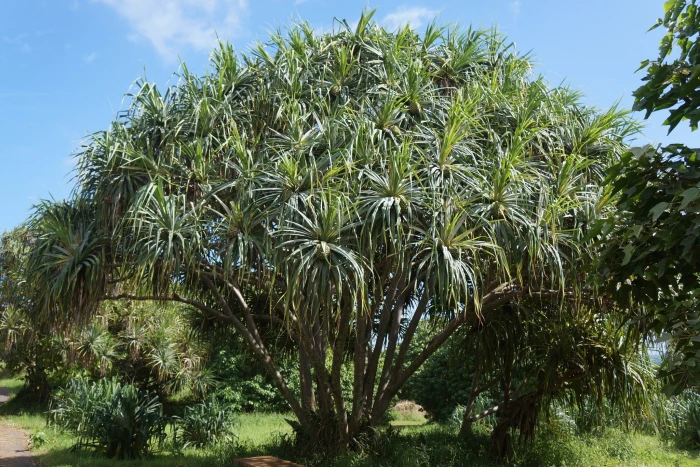Tahitian Screwpine
(Pandanus tectorius)
Tahitian Screwpine (Pandanus tectorius)
/
/

Henggang Cui
Public Domain






































































Estimated Native Range
Climate Requirements for Centennial, Colorado
| This Plant | Your Site | Plant Suitability for Your Location | ||
|---|---|---|---|---|
| • Precipitation | 7" - 176" | 16" | Your precipitation may be insufficient for this plant. Irrigate N" / year. | Irrigate N" / year |
| • High Temp. | 70°F - 101°F | 88°F | Your summer temperatures are normal for this plant. | Excellent |
| • Low Temp. | 33°F - 79°F | 16°F | Your winter temperatures may be too cold for this plant | Too cold |
Summary
The Tahitian Screwpine is valued for its resilience to coastal conditions, making it suitable for beachfront planting and erosion control. It is also used for its ornamental foliage and unique growth form. The plant’s drought tolerance surpasses that of coconut trees, a trait that is beneficial in xeriscaping. It thrives in a variety of coastal soils, including quartz and coral sands, peat, limestone, and basalt, and is tolerant of salt spray and high winds. The tree requires full sun to partial shade, with optimal growth occurring in 30-50% shade; it does not perform well in conditions exceeding 70% shade. Propagation can be from seeds or branch cuttings, with the latter resulting in earlier flowering. Male and female flowers are borne on separate trees, with females flowering 1-3 times per year and males every two months.CC BY-SA 4.0
Plant Description
- Plant Type: Tree
- Height: 15-20 feet
- Width: 10-25 feet
- Growth Rate: Rapid
- Flower Color: Green, White
- Flowering Season: Spring, Summer
- Leaf Retention: Evergreen
Growth Requirements
- Sun: Full Sun, Part Shade
- Water: Medium
- Drainage: Fast
Common Uses
Bird Garden, Drought Tolerant, Edible*Disclaimer: Easyscape's listed plant edibility is for informational use. Always verify the safety and proper identification of any plant before consumption., Erosion Control, Fragrant, Potted Plant, Salt Tolerant, Water Garden
Natural Habitat
Coastal regions and islets in the Pacific Islands, including Micronesia and Polynesia
Other Names
Common Names: Thatch Screwpine, Tahitian Screwpine, Hala Tree, Pū Hala, Pandanus
Scientific Names: Pandanus tectorius, Pandanus baptistii, Pandanus veitchii, Pandanus fatuhivaensis, Pandanus pulposus, Pandanus fischerianus, Pandanus fragrans, Pandanus pedunculatus, Pandanus papenooensis
GBIF Accepted Name: Pandanus tectorius Parkinson ex Du Roi